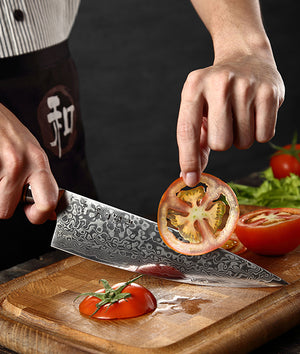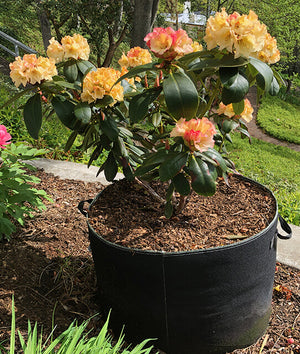
Böhler and Xinzuo Announce New M390 145 Layer Damascus Super Steel: Böhler M390 Steel, Damascus Edition
Böhler and Xinzuo have officially unveiled their latest innovation in high-performance metallurgy - the M390 145 Layer Damascus Super Steel, a cutting-edge fusion of function and craftsmanship. Building on the global success of its original M390 MICROCLEAN steel, this new release combines Böhler’s renowned powder metallurgy process with a striking 145-layer Damascus structure, offering unmatched edge retention, corrosion resistance, and visual appeal.
Known for its fine grain structure and high chromium content, M390 has already become a favorite among knife makers and enthusiasts for its ability to hold a razor-sharp edge over time.
Now, with the added beauty and layered complexity of Damascus-style construction, Böhler raises the bar yet again for premium knife steel.
The announcement has been met with excitement across the cutlery, EDC, and professional chef communities, many of whom view M390 as the gold standard for performance. This new super steel isn’t just a technical upgrade - rather, it’s a bold aesthetic statement and a testament to what’s possible when science and design meet at the cutting edge.
In this article, we’re going to explore what makes M390 special, the significance of this 145-layer breakthrough, and why Böhler’s and Xinzuo’s newest creation in the world of Damascus steel is already being hailed as a modern classic.
What Is Böhler M390 Steel?
Böhler M390 is a high-performance stainless steel developed by Böhler-Uddeholm in Austria using third-generation powder metallurgy. Known for its excellent wear resistance, corrosion resistance, and edge retention, M390 has earned its place among the so-called “super steel” hall of fame.
This martensitic chromium steel is specially engineered for demanding applications like surgical instruments, industrial cutting tools, and, potentially most notably, premium knife blades.
Now, what sets M390 apart is its fine microstructure, which is achieved through powder metallurgy, a process that allows for a highly uniform distribution of carbides. This results in a blade that holds a sharp edge for much longer than conventional steels, resists rust and staining, and maintains overall dimensional stability.
With an optimal working hardness of 61-63 HRC, M390 delivers an excellent balance between strength and edge retention, although it can be challenging to sharpen without proper sharpening tools. Whether you’re a knife collector, a chef, or a total amateur, M390 offers top-tier performance and durability. It’s not just a material - it’s a standard in the world of high-end cutlery.
Xinzuo Introduces the M390 145 Damascus Super Steel
In a bold and innovative partnership, renowned knife maker Xinzuo has joined forces with
Austria’s metallurgical leader Böhler Steel to produce Böhler’s first-ever Damascus knife blade.
After over a year of dedicated research, development, and testing, the collaboration has resulted in a truly exceptional product, the 145-layer Damascus steel blade with a core of Böhler’s high-performance M390 super steel. Known for its elite materials and focus on precise heat treatment.
The layered Damascus construction not only enhances durability and stress resistance but also delivers a striking, hand-forged appearance, which means that every single knife is just as unique as it is functional.
M390, which was originally developed for industrial use, is celebrated for its exceptional edge retention, corrosion resistance, and toughness, translating seamlessly to professional grade kitchen tools.
With official heat treatment reports from Böhler and Xinzuo, this partnership represents more than just a product release - it’s a benchmark in modern cutlery. For chefs, collectors, and serious home cooks, the Xinzuo M390 Damascus series sets a new standard in blade innovation, beauty, and cutting performance.
Properties of Böhler M390 145 Steel
The new Böhler M390 145 Layer Damascus Super Steel combines the trusted reliability of M390 MICROCLEAN with the enhanced structure and beauty of a Damascus finish. This evolution retains M390’s well-known strengths - extreme wear resistance, high corrosion resistance, and excellent polish ability - while layering it in 145 folded layers for greater toughness and striking aesthetics.
These layers don’t just add visual flair with a natural wave pattern - they also contribute significantly to the distribution of stress across the blade, which, in turn, improves overall durability.
The steel is composed of around 1.90% carbon, 20% chromium, and significant amounts of molybdenum and vanadium, which gives it significant hardness and resistance. With high micro-cleanliness, it can be polished to a mirror finish, which is one of many things that make it a favorite among makers of luxury blades.
M390 145 performs best when it’s heat-treated correctly, reaching optimal hardness levels (61–63 HRC) and edge stability through controlled cryogenics and tempering steps. Whether used for kitchen knives or everyday carry, this layered version of M390 represents the next evolution in steel technology - blending proven metallurgy with artisanal design for superior performance and presentation.
Pros and Cons of Using Böhler M390 Steel for Knife Blades
Much like anything, there are both pros and cons of using Böhler M390 steel for knife blades, so here are both edges of the sword, so to speak.
Pros:
Böhler M390 is highly prized for its exceptional edge retention, meaning it stays sharp through extensive use - perfect for both professional chefs and outdoor enthusiasts.
Its high chromium content provides superior corrosion resistance, making it suitable for humid environments or kitchen use where exposure to moisture is frequent.
The hardness and wear resistance allow M390 knives to maintain shape and sharpness longer than most alternatives. Plus, thanks to its fine grain and high micro-cleanliness, M390 can be polished to a flawless, mirror-like finish, making it both functional and beautiful too.
Cons:
That same hardness that makes M390 so durable is also what makes it more difficult to sharpen - it’s both good and it’s bad, so to speak. You’ll need diamond or CBN sharpening stones and a whole lot of patience.
Furthermore, M390 knives come with a higher price tag than other knives due to the complex powder metallurgy process. Some users also note that while M390 is tough, it can be prone to chipping if it’s misused, doing things like prying or striking hard materials. But still, for those who prioritize cutting performance and longevity, the pros far outweigh the cons; there’s no doubt about it.
Why Is Böhler M390 Steel So Popular in the Construction of Knife Blades?
Böhler M390 has become a go-to choice for premium knife makers around the world for one simple reason - performance. Its combination of hardness, corrosion resistance, and edge retention makes it one of the most well-balanced steels on the market today.
Thanks to its fine-grain structure, blades can take on an incredibly sharp, refined edge. M390 also resists rust and staining, which is ideal for culinary professionals, outdoor users, and collectors alike.
Knife makers love it because it offers consistency during heat treatment and can be polished to a stunning finish. Users seriously appreciate the fact that they don’t have to sharpen it often, even with heavy use - not something you find very often.
The steels growing reputation is also helped by the fact that it’s used by major brands and custom makers, adding a premium appeal.
All in all, M390 is popular because it doesn’t force you to compromise - it offers the trifecta of strength, sharpness, and durability. So, create the first Damascus steel blade made with M390 super steel? Böhler and Xinzuo may just be the dream team we didn’t know we needed.
FAQs About Böhler M390 Steel and Its First Damascus M390 Super Steel blade.
Still have a few questions? Here are some FAQS about the Böhler M390 Steel and the first Damascus M390 super steel knife.
What makes Böhler M390 steel so special?
M390 is known as a “super steel” thanks to its exceptional edge retention, high wear resistance, and great corrosion resistance. It’s made with powder metallurgy, which gives it a very fine grain structure, which is ideal for high-performance knives.
Is the new 145-layer Damascus really high quality?
Absolutely. While the layered Damascus design is undoubtedly visually stunning, it also helps with strength, durability, and microstructure stability. Plus, it reduces friction while cutting.
Is M390 difficult to sharpen?
Yes, it can be. Because of its hardness, M390 often requires diamond or ceramic sharpening stones, but the upside is that you won’t need to sharpen it very often.
Is it worth the higher price?
If you want a knife that holds an edge, resists rust, and lasts a long time, yes, a Böhler M390 knife is absolutely worth it. It’s an investment in performance.
Final Thoughts on M390 145 Layer Damascus Super Steel
The release of Böhler’s M390 145 Layer Damascus Super Steel is more than just a milestone in metallurgy - in fact, it’s a celebration of what happens when science meets craftsmanship.
For many years, M390 has held a reputation as one of the finest steels in the knife world, well known for its unmatched balance of edge retention, corrosion resistance, and toughness.
Now, with the introduction of this 145-layer Damascus version, Böhler has elevated its flagship steel into an art form, one that not only performs brilliantly but looks extraordinary too.
Whether you’re a professional chef, a knife collector, or an enthusiast of high-end materials, this new evolution of M390 is worth paying attention to.
Combined with expert heat treatment and thoughtful blade design, something that’s become Xinzuo’s trademark offers lasting performance and striking aesthetics in equal measure.
In a market flooded with mediocre steels and flashy gimmicks that promise more than they deliver, M390 145 Damascus is the real deal - it’s technically advanced, beautiful to look at, and purpose-built for serious users.
It’s a reminder that when quality is your priority, materials matter, and Böhler continues to set the gold standard. And now, it’s doing that in partnership with Xinzuo.
So, if you’re looking to invest in a blade that truly stands out, this might just be the steel you’ve been waiting for.



